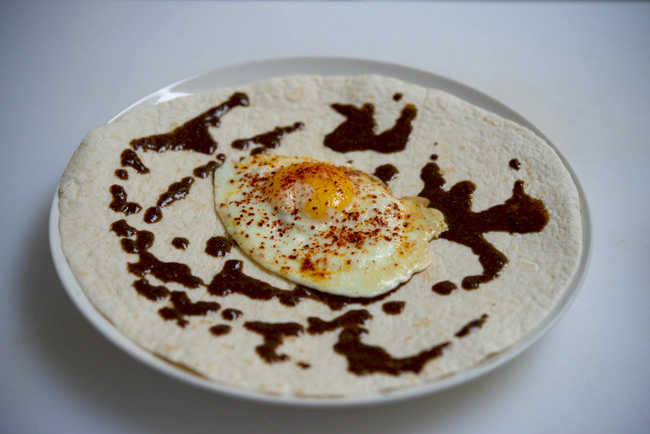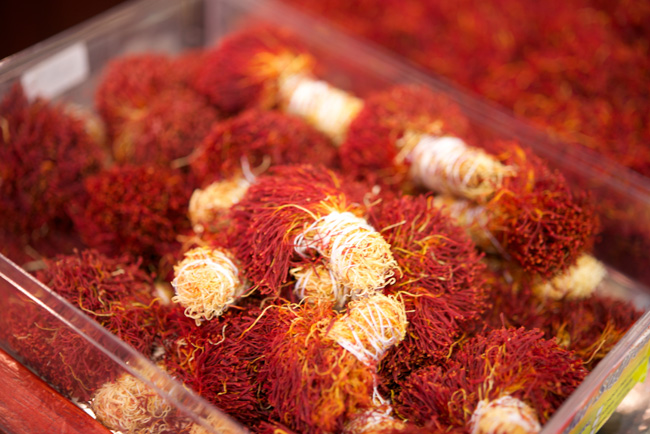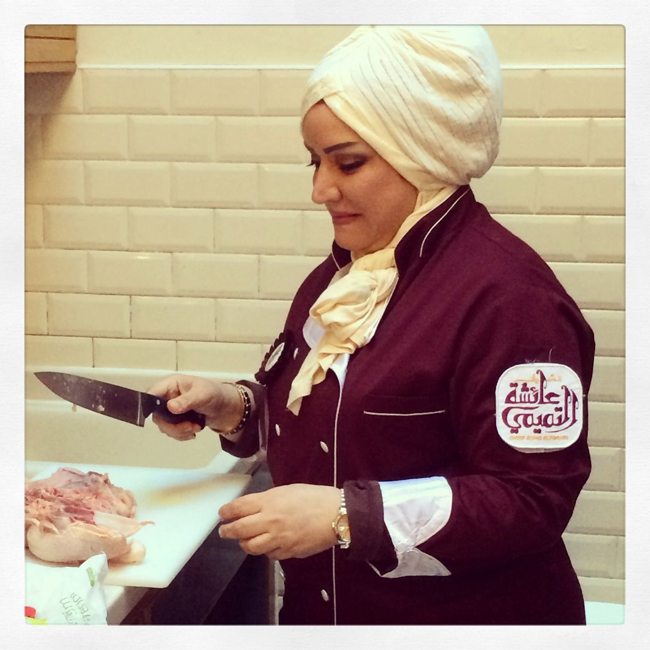26 Aug
 I don’t know if mehyawa (or mahyawa), a fermented fish sauce that has its origins in Iran and is used widely as a spread in the Arabian Gulf, will ever become a global ingredient but it deserves to be. Eaten on its own with bread (usually regag or tannur) or with other ingredients like the fried egg in the picture above, it could be considered an ‘umami bomb’. I can’t remember where I first tasted it but I am pretty sure it was at my wonderful friend, Maryam Abdallah. Maryam is a wonderful cook and the first ever Qatari TV chef. She is married to a Bahraini and gets her mehyawa from Bahrain. According to her and other friends, Bahrain is the place for mehyawa but I got mine from my wonderful friend, Sheikha Bodour al Qasimi, who has been (still is) my saviour whenever I needed to learn about Emirati cuisine. Also when I wrote my piece on camel hump for Lucky Peach when she gave me a whole baby camel! Anyhow, I was having an exchange with her sister Sheikha Hoor Al Qasimi about mehyawa on Instagram where I rued the fact that I didn’t bring back any with me from Qatar (Maryam had offered to give me some but I worried about having a bottle of it in my luggage) and Hoor said she would arrange to send me some. Not long after Bodour’s driver was at my door with two huge jars of excellent home-made mehyawa.
I don’t know if mehyawa (or mahyawa), a fermented fish sauce that has its origins in Iran and is used widely as a spread in the Arabian Gulf, will ever become a global ingredient but it deserves to be. Eaten on its own with bread (usually regag or tannur) or with other ingredients like the fried egg in the picture above, it could be considered an ‘umami bomb’. I can’t remember where I first tasted it but I am pretty sure it was at my wonderful friend, Maryam Abdallah. Maryam is a wonderful cook and the first ever Qatari TV chef. She is married to a Bahraini and gets her mehyawa from Bahrain. According to her and other friends, Bahrain is the place for mehyawa but I got mine from my wonderful friend, Sheikha Bodour al Qasimi, who has been (still is) my saviour whenever I needed to learn about Emirati cuisine. Also when I wrote my piece on camel hump for Lucky Peach when she gave me a whole baby camel! Anyhow, I was having an exchange with her sister Sheikha Hoor Al Qasimi about mehyawa on Instagram where I rued the fact that I didn’t bring back any with me from Qatar (Maryam had offered to give me some but I worried about having a bottle of it in my luggage) and Hoor said she would arrange to send me some. Not long after Bodour’s driver was at my door with two huge jars of excellent home-made mehyawa.
18 Mar
 Yesterday I was taken to buy saffron by my wonderful friend, Maryam Abdallah, Qatar’s first TV chef and a wonderful cook and educator. On the way, she gave me a wonderful tip on how to make sure I am buying real saffron which I thought I would pass on. Now, you probably don’t need to know this if you are buying saffron pre-packed by the gram but you better know it if you are going to buy saffron in industrial quantities the way they do in the souk. It’s very simple. All you need to do is ask the vendor for 3 or 4 threads of saffron which you put on your tongue and suck on for a few seconds. You then spit the threads out onto a clean tissue and rub them inside the tissue. If they colour it yellow, you know you are buying real saffron. If they colour it red, you are being sold coloured threads that have nothing to do with saffron. I wish my friend who recently brought me tons of saffron from Morocco knew this because he would have avoided buying a whole lot of fake saffron with only a few real threads in between for the smell! The top picture is of how they sell saffron here in Qatar, bunched up in ‘bouquets’ of 10 grams and below is a picture of my test to make sure I was not being sold fake saffron!
Yesterday I was taken to buy saffron by my wonderful friend, Maryam Abdallah, Qatar’s first TV chef and a wonderful cook and educator. On the way, she gave me a wonderful tip on how to make sure I am buying real saffron which I thought I would pass on. Now, you probably don’t need to know this if you are buying saffron pre-packed by the gram but you better know it if you are going to buy saffron in industrial quantities the way they do in the souk. It’s very simple. All you need to do is ask the vendor for 3 or 4 threads of saffron which you put on your tongue and suck on for a few seconds. You then spit the threads out onto a clean tissue and rub them inside the tissue. If they colour it yellow, you know you are buying real saffron. If they colour it red, you are being sold coloured threads that have nothing to do with saffron. I wish my friend who recently brought me tons of saffron from Morocco knew this because he would have avoided buying a whole lot of fake saffron with only a few real threads in between for the smell! The top picture is of how they sell saffron here in Qatar, bunched up in ‘bouquets’ of 10 grams and below is a picture of my test to make sure I was not being sold fake saffron!
4 Dec
Compared to twenty years ago when I started writing about food when ingredients like frikeh (or freekeh) and argan oil were known to only a few westerners, there are now less and less secret ingredients, or indeed cuisines. You would think that with diners’ enthusiasm for global dishes and ingredients there isn’t much left for chefs or keen cooks to discover. But there is. And this is what we did last month at Books for Cooks, when I and Nadya Saleh from the National Museum of Qatar‘s Food Forum together with the delightful and very talented Aisha al-Tamimi introduced a keen audience to Qatari dishes they were totally unfamiliar with. The two cooking demonstrations were led by Aisha and were part of Nour Festival and Qatar UK, the latter being a collaboration between Qatar and the UK to exchange cultural and art events while the former is an initiative by the London Borough of Kensington and Chelsea to showcase Middle Eastern art and culture.

